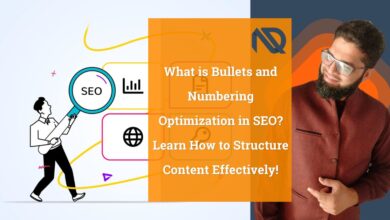What is UX Readability?
UX Readability refers to how easily users can read, understand, and engage with text-based content on a website or application. It focuses on the clarity, structure, and presentation of text to ensure that it meets the needs of the audience while enhancing user experience and interaction. By combining elements of content design, accessibility, and technical optimization, UX readability plays a critical role in making digital experiences intuitive and engaging.
Content that prioritizes UX readability exhibits clarity, ensuring that the language is straightforward and easy to understand. It is concise, avoiding unnecessary words, and relevant, addressing the specific needs and intent of the target audience. Proper grammar and spelling eliminate distractions, while the tone appropriateness matches the context, whether formal, casual, or technical. The content is actionable, using clear calls-to-action (CTAs) and engaging, often employing storytelling or relatable examples to hold attention.
Structurally, UX readability relies on short sentences (15–20 words), brief paragraphs (2–3 sentences), and the effective use of headings and subheadings for navigation. Bullet points and lists organize complex information into digestible chunks, while highlighting key points through bold or italicized text draws attention to important information. Text alignment is consistent, typically left-aligned for ease of reading.
From a design perspective, UX readability benefits from appropriately sized fonts (16px or higher for body text), readable font types like sans-serif for digital content, and adequate line spacing to prevent overcrowding. Strong contrast between text and background improves visibility, while whitespace reduces visual clutter. A responsive design ensures that text adjusts seamlessly across devices and screen sizes, with a clear visual hierarchy to differentiate headings, subheadings, and body text.
Accessibility is another cornerstone of UX readability. Content uses alt text for images to aid screen readers and avoids complex jargon or technical terms for readable language. Features like keyboard navigation and screen reader compatibility ensure inclusivity for users with disabilities, while language localization adapts content for multilingual audiences.
Behaviorally, UX readability supports skimmability, allowing users to quickly find relevant information. It ensures a logical flow of ideas, making content easy to follow. Readability metrics such as the Flesch Reading Ease or SMOG Index ensure the content is accessible to a wide audience. Call-to-action placement is optimized for visibility and impact, while content personalization adapts text to suit individual preferences or contexts.
From an SEO perspective, UX readability incorporates keyword optimization, naturally weaving in relevant keywords to enhance visibility. Meta descriptions are crafted for readability, summarizing content effectively. Readable URLs are descriptive and easy to understand, while performance metrics such as bounce rates and dwell time indicate how well users engage with the content. Internal links to related pages improve engagement and navigation.
Emotional and psychological attributes also play a role in UX readability. Content demonstrates empathy, addressing user needs and concerns, while incorporating emotional triggers that elicit desired responses, such as excitement or urgency. The content builds trustworthiness by presenting accurate and credible information and maintains a consistent tone throughout.
Technically, UX readability depends on proper HTML semantics, using tags like <p>, <h1>, and <ul> to structure content. Features like responsive font scaling and cross-browser compatibility ensure text is legible across various devices and platforms. Lazy loading optimizes page performance by loading text and images efficiently.
Tools and techniques like Hemingway, Grammarly, and readability analyzers assess and refine the readability of content. A/B testing helps evaluate the effectiveness of different layouts, while heatmaps provide insights into user interaction. Accessibility checkers ensure compliance with ADA or WCAG standards, enhancing inclusivity.
However, UX readability faces challenges such as information overload, where excessive text overwhelms users, and balancing depth and simplicity, which requires delivering detailed information concisely. Ensuring device adaptability is critical for small screens, and content must consider cultural sensitivity to resonate with diverse audiences. Regular user feedback integration helps refine content based on user behavior and preferences.
The benefits of UX readability are extensive. It enhances user engagement by keeping readers focused and encouraging exploration, improves SEO rankings by meeting search engine standards, and reduces bounce rates, keeping users on the page longer. Accessible and readable content supports a broader audience, increases conversions by guiding users effectively, and builds trust by delivering clear, high-quality content.
To achieve optimal UX readability, follow best practices like writing for the audience’s literacy level, using active voice for directness, breaking up text with headings and bullet points, and optimizing fonts and colors for visibility. Regular testing and refinement based on analytics and feedback ensure that content remains effective and user-focused.
An In-Depth Overview!
Want SEO Consultancy for your project?
If you feel that you are lost in somewhere middle, I am here to help you with this.



